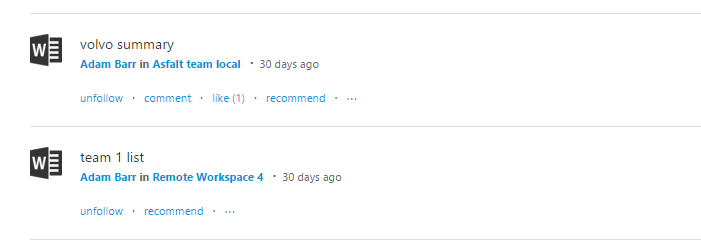What's New
Improved Role Management for Snow
In the previous versions there were only three roles available: Owner, Reader, Member. And extending this number of roles was not that straightforward.
With this release of MatchPoint Snow it is now possible to define any number of roles.
Add new Role
New roles can be defined on many levels, i.e.:
- Snow configuration
- Snowflake configuration
- Workspace types
For our example we will create a new role in the Snow Configuration:
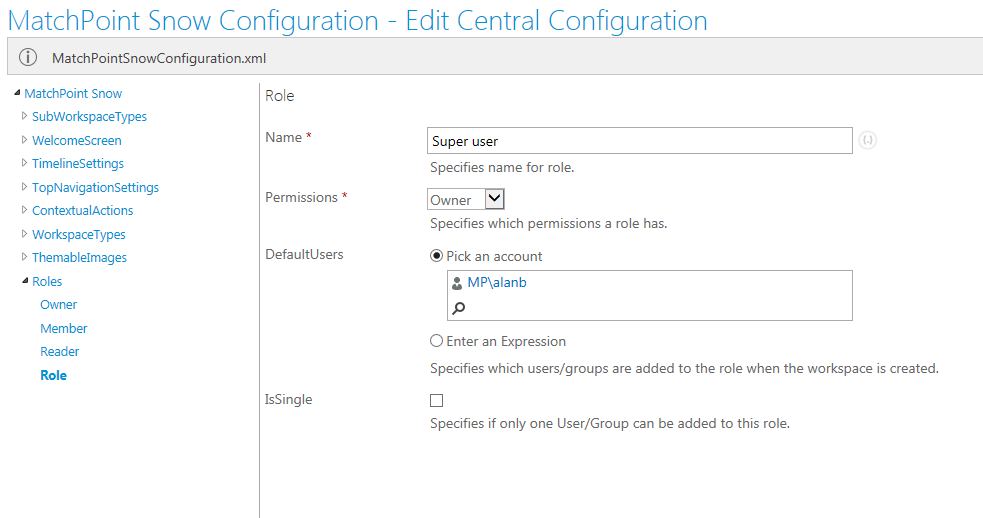
To add a new role, simply open Snow Configuration, select “Roles” and click on “Role” in the ribbon.
The new role has some properties to be set:
- Name: The unique identifier of the role which used to reference the role in other configurations such as the “ProvisioningConfiguration”.
- Permissions: Specifies the permission level which users in this role will have granted.
- DefaultUsers: Allows to select users, which will be added to this role by default on workspace creation.
- IsSingle: Specifies whether the role is forced to contain only one user.
Provisioning Configuration
As a next step, you should make proper changes in the configuration of type "Provisioning Configuration". In the configuration, please go to the property ProvisioningConfiguraion - > WebDefinition -> PermissionAssignments, and add each role with proper permission level (we suggest to use “Reader” or “Contributor”).
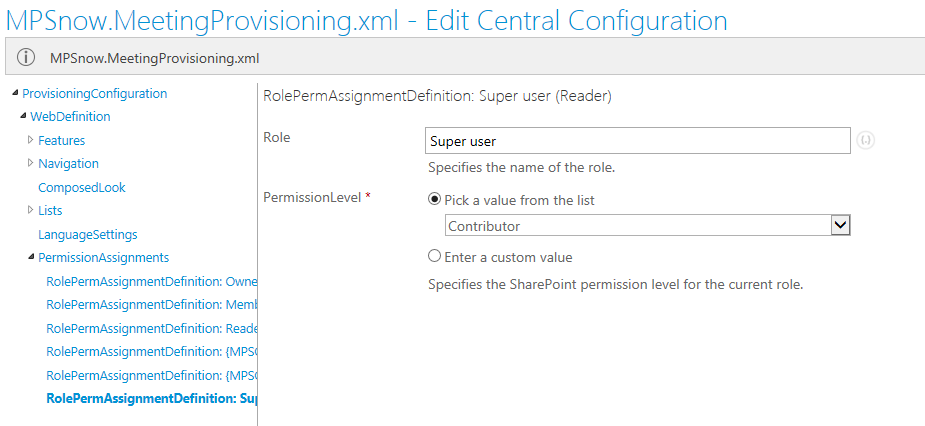
Workspace Template Configuration
As a last part of role creation, please open related configuration of type “Workspace Template Configuration” and specify the roles with “Owner” permission set in the property RoleTagDefinition -> IncludedRoles. This allows to properly apply tags on created workspaces. Please note, that it is recommended to specify roles with “Owner” permission only.
Role Reference
To use roles in a workspace type, they not always have to be defined in the workspace types. It is possible to use roles which are defined on higher levels (Snow configuration or Snowflake configuration). In order to use such a role, a reference to the role has to be created:
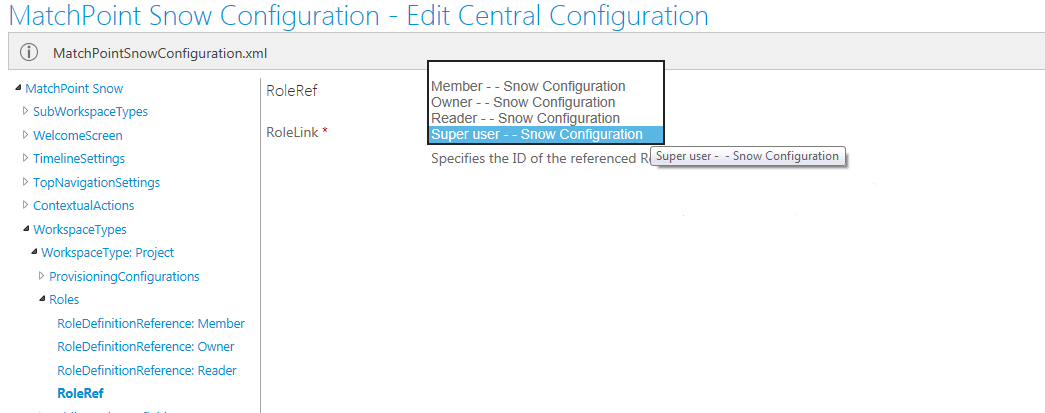
Whithin the role reference you have to specifiy the "RoleLink" property which specifies the link to the referenced role.
Please note that only roles defined or referenced in the workspace type will be available on this workspace after creation, even if some roles are defined on snow or snowflake level.
Public Readers
Public readers for a workspace type are now specified via roles as well. Within the workspace type one or more "PublicReaderDefinition" can be specified. A "PublicReaderDefinition" defines which users ("Accounts" property) are added to the specified reader group ("ReaderRoleId" property) when the workspace becomes public.

Creator Role
Also, in the workspace type it is possible to specify to which role of the workspace the user is added when he creates a workspace. Previously this user was added by default to the “Owner” role.

We recommend to select for such a purpose, roles with “Owner” permission set, but it is allowed to select any type of role.
MatchPoint Snow Hybrid
We introduced out-of-the box Remote Workspaces support. This post will cover all functionality that we added to Snow for Remote Workspaces and Hybrid setup.
Package:
MatchPoint.Snow.Hybrid.wsp:
This package contains all the features and customizations that are necessary to enable Snow hybrid support. It needs to be deployed globally on your local SharePoint farm.
Features:
MatchPoint Snow Hybrid Feature
By activating this feature RemoteWorkspaceType will be added to your Snow environment. New configured RemoteWorkspaceType “Remote” will be added to MatchPoint Snow configuration and MPSnow.Tags.System.xml timer job will be executed.
After that you will be able to create remote workspace using the same method as for standard Snow workspaces.
This feature needs to be activated on your MatchPoint instance site collection.
MatchPoint Snow Hybrid Integration
This feature modifies your MatchPoint Snow configuration files to fully support hybrid setup. All configuration files that are connected to the workspace/content aggregation are switched to the search based method (All data providers are switched to SearchDataProvider) with properly modified search conditions.
This feature needs to be activated on your Snow site collection.
Configurations:
MatchPoint Snow Hybrid Configuration
This new configuration file contains global Hybrid settings for Snow. You can define there SearchConditions to restrict search results returned from SharePoint Online. This search conditions are returned by MPSRemoteHelper.GetSearchConditions(). This method is used in all relevant workspace/content aggregation configuration after “MatchPoint Snow Hybrid Integration” feature is activated.
RemoteWorkspaceType:
We have extended MatchPoint Snow Configuration with a new WorkspaceType - RemoteWorkspaceType. RemoteWorkspaceType represents remote workspace. Its definition is similar to the WorkspaceType but you cannot define ContextualActions and ProvisioningConfiurations. Of course, RemoteWorkspaceType support new improved role model introduced with this Snow release.
Snow Remote Workspaces
Creation
You can create Snow Remote Workspace using the same way as you do for standard Workspace. Just go to your Workspaces Overview page and click “Create a workspace” link from your contextual actions. If you have permissions it will be showed in "Workspace Template Chooser":
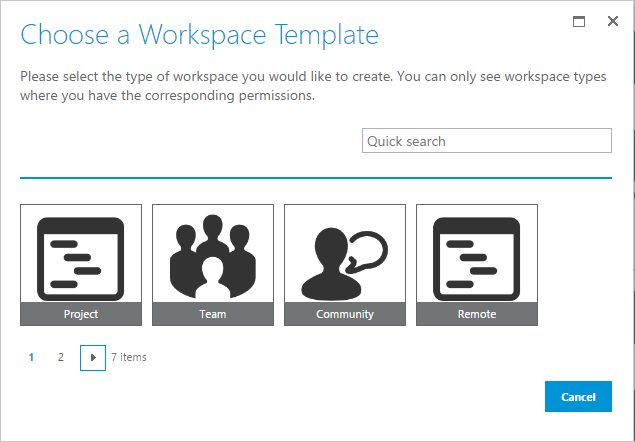
Management:
Remote Workspace Management looks a bit different comparing to the standard Snow workspace. To govern remote workspace, you need to access special page using "Govern Workspace" link from workspace callout.
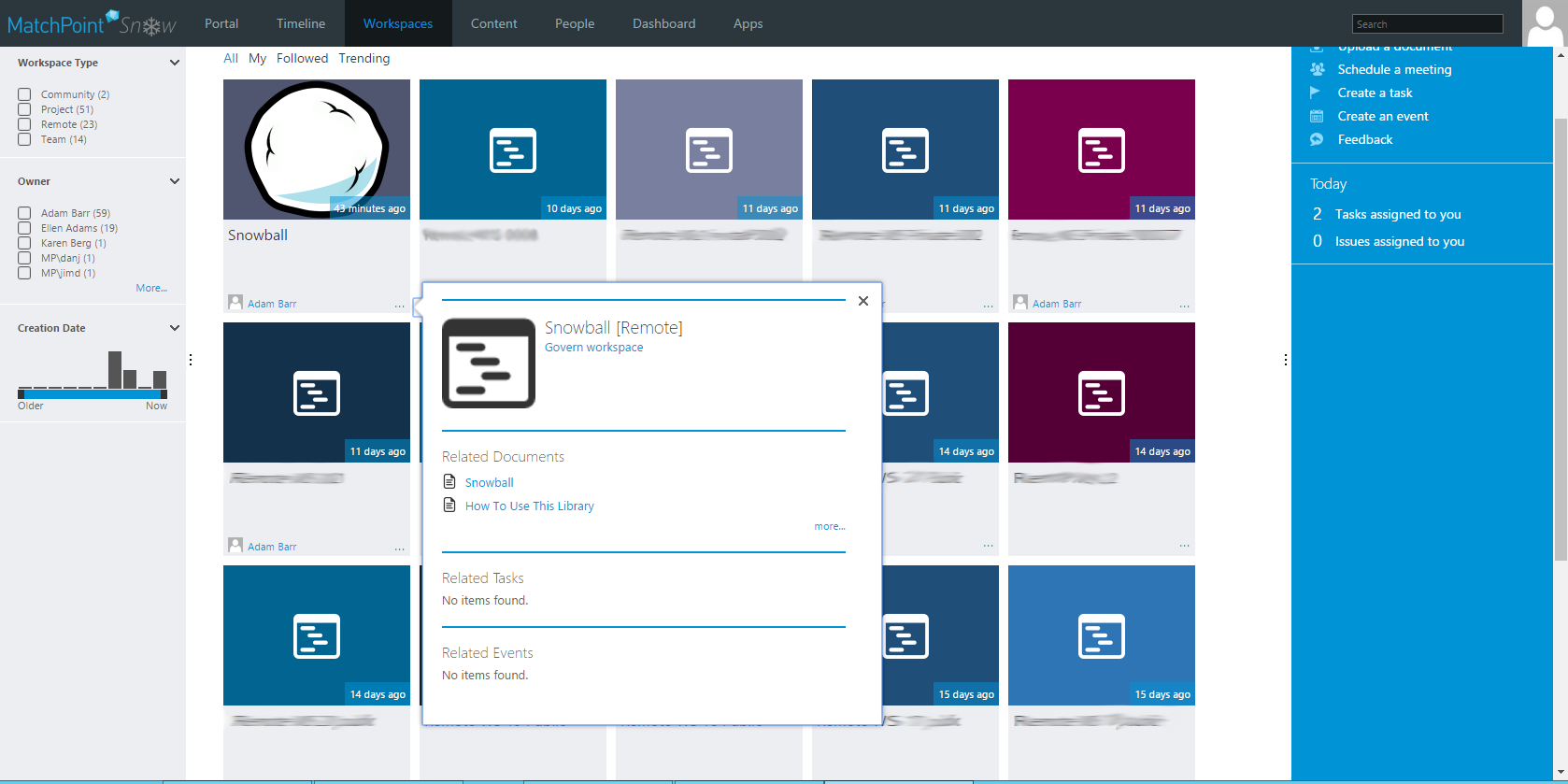
Note:You need to be in a workspace owner role to see "Govern Workspace" link.
Govern workspace page contain 3 tabs:
- Govern Workspace
- Manage Participants
- Change the logo
You can find the description of tabs below.
Govern Workspace
This tab provides possibility to maintain workspace metadata and tags. Depends on the configuration you will be able to change workspace properties.
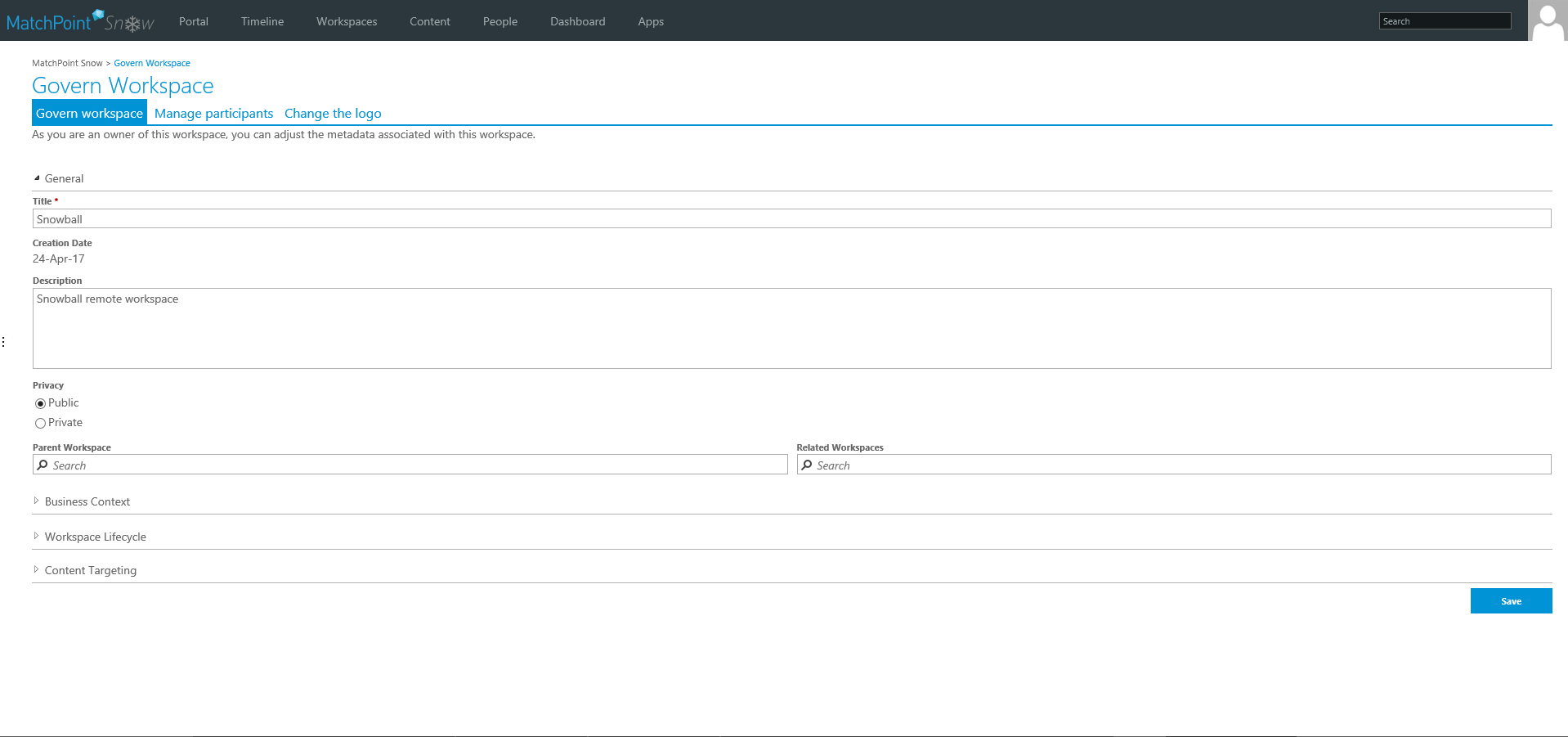
Manage participants
Under this tab, you can manage workspace participants. Add/Remove users from roles easily like in standard workspace case.
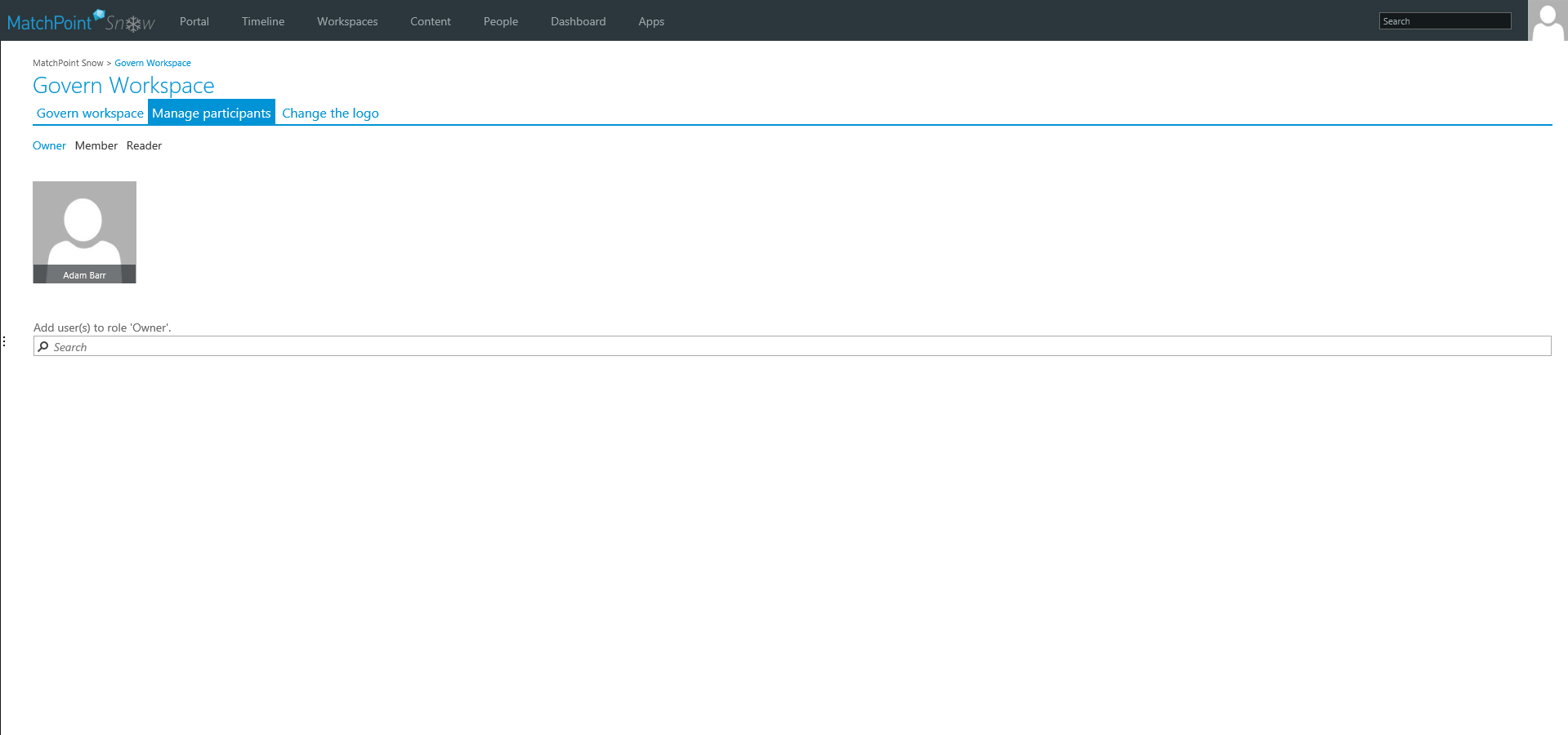
Change the Logo
Under this tab, you can change workspace logo. This logo will be changed and visible in Snow portal.
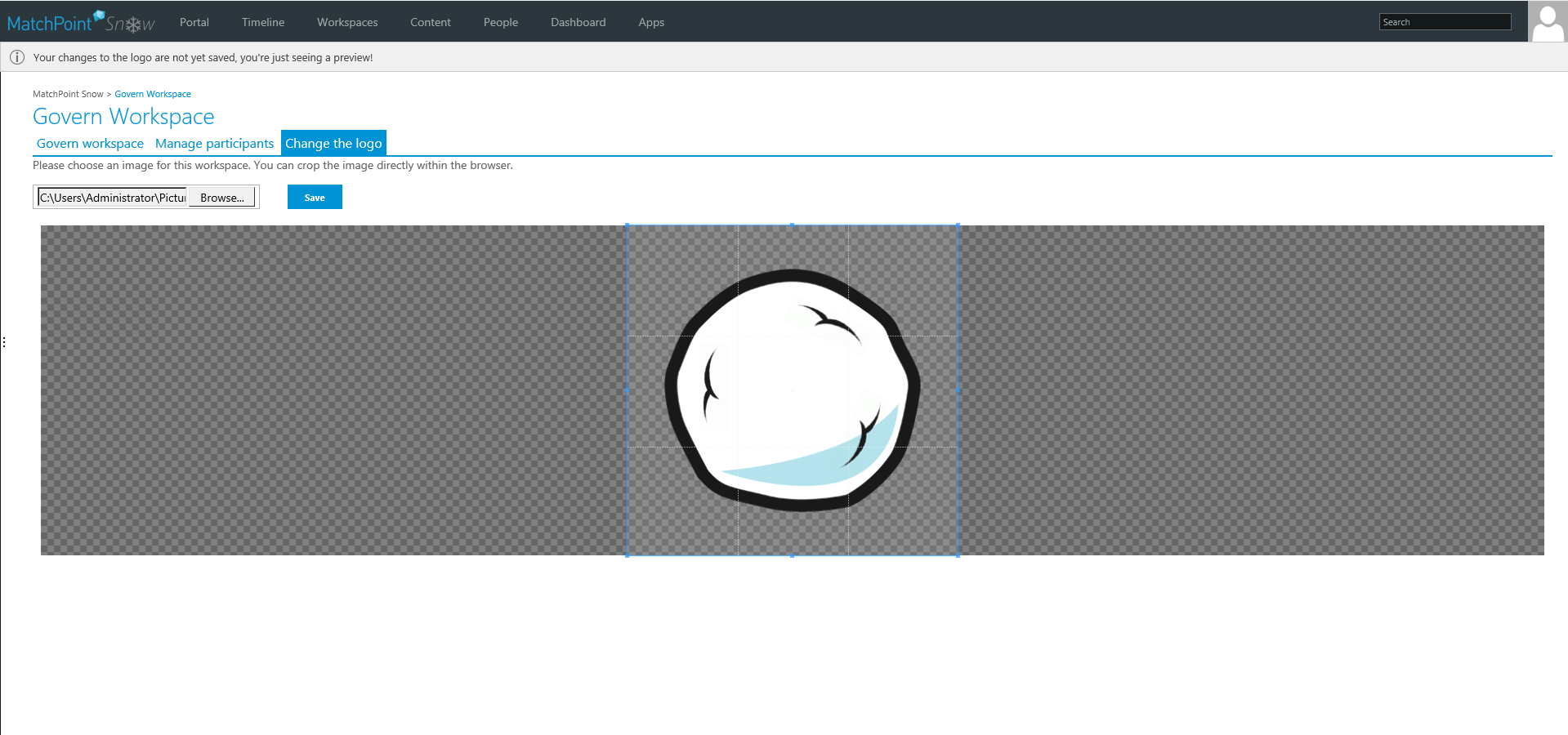
Content:
Content that is placed in Remote Workspaces will be aggregated and displayed along with local SharePoint results in Snow. You can restrict results from SharePoint Online by modifying "MatchPoint Snow Hybrid Configuration".
Note: Due to SharePoint Online restrictions remote workspace content will not be tagged with MatchPoint tags.
Social Actions
Not all social actions are available for remote content showed in Snow. Remote content can be only followed and recommended. Search results callout is also limited.
